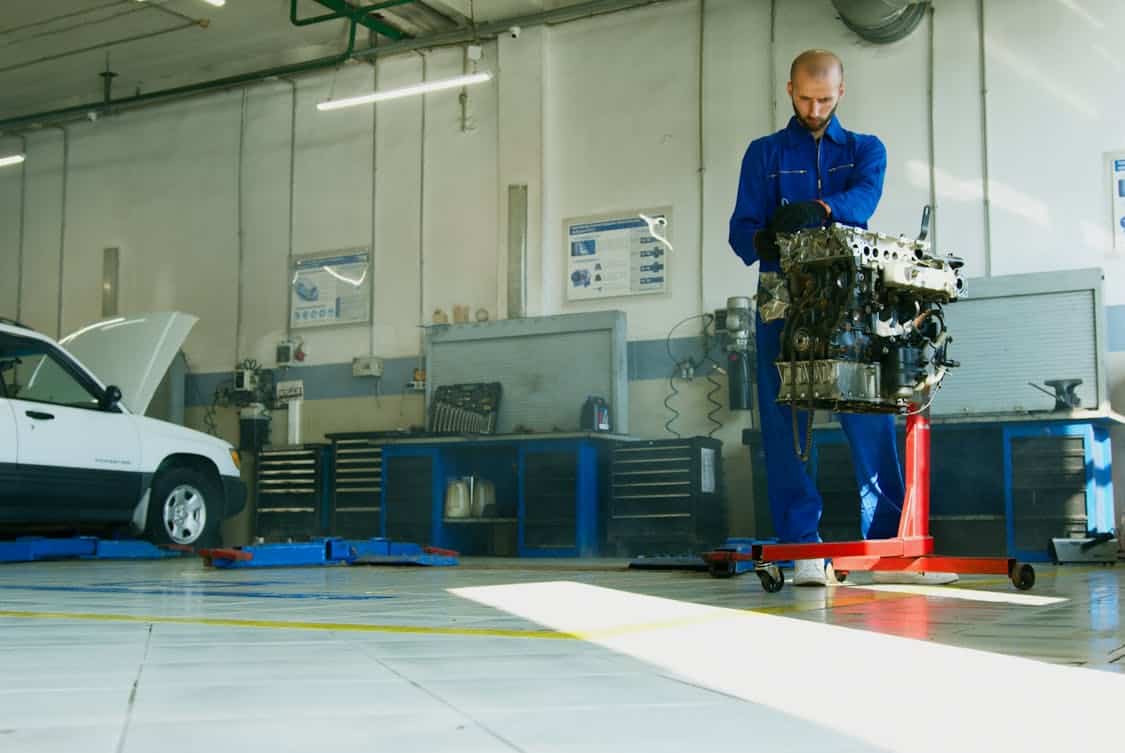The garage is often seen as an afterthought in home design, yet it serves many purposes. From storing vehicles to functioning as a workshop, the garage flooring can play a crucial role in its usability and aesthetics. However, many myths surround garage flooring that can lead homeowners astray. Let’s tackle these misconceptions and provide clarity …
Garage Flooring Myths Debunked: What You Should Know

The garage is often seen as an afterthought in home design, yet it serves many purposes. From storing vehicles to functioning as a workshop, the garage flooring can play a crucial role in its usability and aesthetics.
However, many myths surround garage flooring that can lead homeowners astray. Let’s tackle these misconceptions and provide clarity on what is actually important when selecting flooring for your garage.
Myth 1: All Garage Floors Are Created Equal
One of the biggest misconceptions is that all garage floors are interchangeable. Many assume that a simple concrete slab will suffice for any application. The truth is, different types of flooring materials serve various needs.
Concrete is indeed common, but it’s not always the best choice for every situation. For instance, if the garage is exposed to chemicals or heavy machinery, materials like epoxy or vinyl tiles might be more suitable. These options can offer better durability and resistance to stains and impact.
Myth 2: Garage Flooring Is Only About Looks
While aesthetics certainly play a part in flooring choices, functionality should take precedence. Many people mistakenly prioritize how the flooring looks rather than how it performs.
For example, a shiny epoxy finish might look stunning but can be slippery when wet. If safety is a concern, consider texture and grip in your flooring selection. It’s essential to strike a balance between visual appeal and practical application, ensuring the chosen material meets both aesthetic and functional requirements.
If you’re looking to achieve both, we recommend exploring long‑lasting high‑gloss garage finishes that offer durability without compromising on style.
Myth 3: Installation Is a DIY Task for Everyone
A common belief is that garage flooring installation is a straightforward DIY project, suitable for any homeowner with basic tools. While some may have the skills, many underestimate the complexity involved in a proper installation.
For instance, epoxy flooring requires careful preparation and precise application. If not applied correctly, it can bubble, chip, or peel, leading to costly repairs down the line. It’s often best to consult professionals, especially if you’re considering more intricate flooring types, to ensure longevity and durability.
Myth 4: Concrete Floors Don’t Need Maintenance
Many homeowners believe that once a concrete garage floor is installed, it requires little to no maintenance. This is far from the truth.
Concrete can crack, stain, and wear down over time, especially if exposed to harsh chemicals or heavy traffic. Regular maintenance, such as sealing and cleaning, is vital for extending the life of a concrete floor. Without proper care, what starts as a solid foundation can quickly turn into a liability.
Myth 5: All Garage Floor Coatings Are the Same
Another prevalent myth is that all flooring coatings will provide the same level of protection and durability. Coating products vary widely in terms of composition, performance, and aesthetics.
For instance, some coatings are designed for decorative purposes only and may not withstand heavy impact or chemical exposure. Epoxy and polyaspartic coatings are generally more durable and resistant to wear. Researching the specifics of each product is essential to make an informed decision that fits your garage’s needs.
Myth 6: You Don’t Need to Consider Climate
Ignoring climate conditions when choosing garage flooring is a common oversight. Many believe that since the garage is enclosed, it’s not affected by outside weather. This misconception can lead to poor flooring choices that may not hold up over time.
For instance, in humid climates, certain flooring types may warp or deteriorate. Areas prone to freezing temperatures might require flooring that can withstand extreme cold without cracking. Therefore, it’s wise to assess regional weather patterns when making flooring decisions.
Myth 7: Any Floor Can Handle Heavy Weights

Some people think that any garage floor can support heavy equipment or vehicles. This myth is misleading.
Not all flooring materials have the structural integrity required to bear the weight of heavy machinery or vehicles. For example, thin vinyl tiles or soft mats may not hold up under stress, leading to damage or disrepair. Before selecting a material, assess the weight demands expected in the garage and choose accordingly.
Myth 8: Once Installed, It’s Set for Life
A common belief is that once you install garage flooring, it will remain in perfect condition indefinitely. In reality, wear and tear from everyday use can take a toll on flooring over time.
Some materials, like epoxy coatings, may require periodic reapplication to maintain their effectiveness. Additionally, heavy traffic, spills, and environmental factors can lead to deterioration. Regular inspections and proactive maintenance are necessary to keep garage flooring in its best shape.
Myth 9: Flooring Choices Are Limited to Traditional Materials
Many homeowners assume that standard materials like concrete or tiles are the only options for garage flooring. However, the market has expanded significantly, offering a variety of innovative products.
From rubber flooring that provides exceptional traction to interlocking tiles that are easy to install and replace, the options are almost limitless. Exploring beyond traditional materials can reveal unique solutions that meet specific needs while enhancing the garage’s functionality.
Myth 10: You Can’t Customize Your Garage Floor
Some believe that once you choose a flooring type, customization is off the table. This isn’t the case. Many flooring options allow for personalization in color, texture, and design.
For example, epoxy coatings can come in a range of colors and finishes, while tiles can be arranged in patterns that add visual interest. Customization not only enhances aesthetics but can also improve functionality by allowing for zoning within the garage, such as creating separate areas for work and storage.









